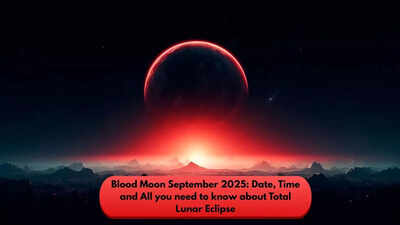ARTICLE AD BOX

A Blood Moon occurs during a total lunar eclipse when the Moon turns deeply red by Earth's shadow. This one is unique—it won't happen again until 2026—and its impact will be felt all over the world.
The Moon will shine in a rich crimson color, when it passes into Earth's shadow during the night of September 7-8, 2025. This eclipse will be most visible in Asia, Australia, eastern Africa, and portions of Europe. You can still feel its impacts even if you can't see it.
Blood Moon 2025: A Rare Celestial Event
On the night of 7-8 September 2025, the Moon will enter Earth's shadow, glowing a deep crimson color in a rare total lunar eclipse. It is recommended that people mark the date on their calendars and go outside to see this incredible crimson moon phenomenon in September.
The 2025 blood moon will be a memorable sight for those who are fortunate enough to be at the correct places.
Is It Possible to See the Blood Moon in India?
Skywatchers in India should be aware that this Moon Eclipse will be visible in India and that people would be able to witness it and capture it in their DSLR's. The lunar eclipse will also be visible in Asia, Australia, eastern Africa, and portions of Europe. Indian stargazers should not miss the wonderful night sky experience.
Why Does the Moon Turn Red?
A Blood Moon occurs during a total lunar eclipse when Earth passes directly between the Sun and the Moon. Longer-wavelength red and orange light can reach the Moon's surface because shorter-wavelength blue light is scattered by the Earth's atmosphere, giving the Moon a reddish appearance.
How to see the rare Blood Moon?
A Total Lunar Eclipse is entirely safe to see with the unaided eye, unlike a solar eclipse, which necessitates protective eyewear. But to get most and the best out of it, remember these pointers:
- Pay attention to forecasts because cloud cover may block the eclipse.
- Go to an area distant from city lights because light pollution can reduce the eclipse's impact
- Make use of a telescope or binoculars for the best results
- Although the eclipse may be seen with the unaided eye, details of the moon's surface can be seen with magnification.



.png)
.png)
.png)
















 2 days ago
5
2 days ago
5







 English (US) ·
English (US) ·